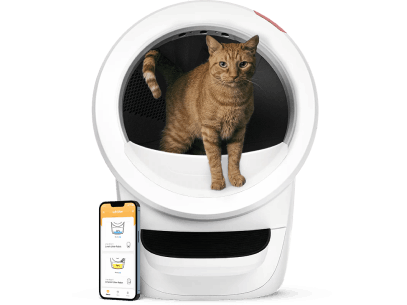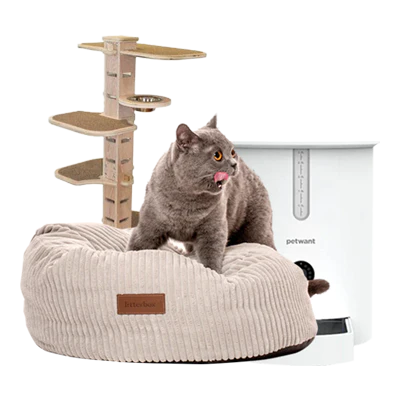This article explores why a male cat may begin peeing outside his litter box. Many cat owners face frustrating accidents despite providing proper care. The issue can stem from underlying discomfort, behavioural changes due to stress, or environmental factors. In this guide, we outline common medical and behavioural triggers, review how to observe signs early, and suggest practical steps you can take to support your cat. Always consult a qualified veterinarian for diagnosis and treatment.
What Are the Most Common Reasons Male Cats Pee Outside the Litter Box?
Male cats may urinate outside their litter box due to a combination of potential health conditions, stress, and environmental discomforts that affect their toileting behaviour.
Health Considerations
How Can Urinary Discomfort Affect Litter Box Habits? Issues such as urinary tract irritation or inflammation can cause discomfort, leading to avoidance of the litter box. Some studies suggest that bacterial infections may contribute to these issues in certain cats. Symptoms like straining, frequent urination, or signs of pain should be assessed by a veterinarian.
Could Bladder Irritation or Urinary Crystals Be a Factor? Conditions like bladder inflammation or urinary crystals may lead to frequent or painful urination. Your vet may recommend imaging or urine analysis to help determine the cause. Management might include diet changes or supportive care.
Might Kidney or Prostate Concerns Play a Role? Increased urination, accidents, or withdrawal could relate to kidney or prostate discomfort. These require proper veterinary tests, such as ultrasounds or bloodwork, for confirmation. Early evaluation supports more effective care.
When Should You Speak With Your Vet? If your cat shows sudden changes in urination, including frequent attempts, signs of pain, or changes in demeanour, it’s best to consult your vet promptly. A timely check-up can help prevent the issue from becoming more serious.
Behavioural and Environmental Triggers
Can Stress or Anxiety Affect Litter Box Habits? Stress can disrupt a cat's normal routine. Environmental noise, household changes, or tensions with other pets may lead to inappropriate urination. Reducing stressors and providing a calm, enriched environment can be helpful.
How Does Marking Differ From Accidental Urination? Territorial marking is common, especially in intact males, and usually involves small amounts of urine on vertical surfaces. This differs from larger, unintentional puddles. Neutering and behavioural strategies may help manage this.
Can Changes in Routine Lead to Accidents? Yes. Moving house, changes in furniture placement, or even relocating the litter tray can affect toileting behaviour. Keeping routines predictable and changes gradual may reduce the likelihood of issues.
What Are the Signs of Stress-Related Urination? Signs include vocalisation, hiding, overgrooming, or urinating in specific spots. Tracking your cat’s behaviour over time can help clarify whether the issue is situational or physical.
Solutions and Management Strategies
What Kind of Litter Box Setup Works Best? Choose a spacious, open litter box placed in a quiet, accessible spot. Avoid placing it near food or water bowls. Many cats prefer unscented, clumping litter with a texture they find familiar.
How Can Cleaning Help Prevent Repeat Accidents? Use enzymatic cleaners to thoroughly remove urine odours, as residual smells can prompt repeat accidents. Avoid ammonia-based products. Scoop daily and deep-clean weekly for optimal hygiene.
Can Enrichment Reduce Unwanted Urination? Absolutely. Offer vertical climbing spaces, hiding spots, toys, and interactive play. Environmental enrichment helps reduce boredom and anxiety, both of which can influence toileting behaviour.
Are Calming Products Worth Trying? Pheromone diffusers, calming sprays, or natural supplements may support a more relaxed home environment. Results vary, but many owners find these tools help reduce anxiety-driven behaviour.
Diagnosis and Observation
What Tests Might a Vet Recommend? Common diagnostics include urinalysis, blood tests, and occasionally imaging such as X-rays or ultrasound to check for inflammation, crystals, or other concerns. Your vet will tailor testing to your cat’s symptoms.
How Can You Help Track Behaviour at Home? Keep a diary of when and where accidents occur, alongside notes on any routine changes or signs of stress. This information can help your vet make a more accurate assessment.
When Is a Specialist Referral Needed? If initial treatments are ineffective or if the issue is recurring, a referral to a veterinary specialist or feline behaviourist may offer further insights and treatment options.
Prevention and Long-Term Support
How Can Litter Box Placement Make a Difference? Place litter trays in low-traffic, calm areas of the home. For multi-cat households, provide one box per cat, plus one extra. Avoid moving trays frequently.
Why Is Ongoing Vet Care Important? Routine check-ups help monitor for early signs of urinary issues and allow for dietary or behavioural adjustments before problems become severe.
Can Diet and Hydration Support Urinary Well-being? Yes. A well-balanced diet with plenty of moisture supports healthy urinary function. Wet food and clean, fresh water can help reduce concentration of the urine, which may support long-term health.
What Helps in Multi-Cat Households? Provide enough litter trays, feeding stations, and resting areas to reduce competition. Use enrichment to give each cat their own space and routine.
Understanding Gender Differences
Why Are Male Cats at Greater Risk of Blockages? The narrower urethra in male cats may predispose them to blockages from crystals or debris. This makes regular monitoring important. Your vet can help guide preventative care.
Do Behavioural Factors Differ Between Males and Females? Males may be more prone to marking, especially if intact. Females may be more affected by stress-related urination. Recognising individual patterns helps shape your approach.
Does Treatment Vary by Gender? Often, yes. Neutering is recommended to reduce marking, and diet may be more closely monitored in males to prevent blockages. Always consult with your vet to develop the most effective plan.
Recognising When It’s Urgent
When Should You Seek Immediate Care? Signs like straining, vocalising, inability to pass urine, or visible pain should be treated as emergencies. Contact your vet immediately to avoid serious complications.
Why Is Timely Action Critical? Delays in care may worsen health outcomes, especially in cases involving obstruction or infection. Rapid intervention often makes a significant difference.
What Happens If Issues Go Untreated? Untreated urinary issues can lead to discomfort, behavioural changes, or more serious complications. It’s always best to investigate changes early and seek support.
Final Thoughts
Frequently Asked Questions
Behavioural issues often come with changes in routine or stress, while medical issues involve symptoms like straining or blood in the urine. Always consult a vet to rule out health concerns.
Choose a large, open litter box placed in a quiet area. Use unscented clumping litter and clean it daily. Consistency in box type and location helps reduce accidents.
Yes. Specially formulated urinary support diets may help maintain optimal urinary health when recommended by a vet.
Absolutely. Pheromone diffusers, calming collars, and supplements may help lower stress levels, especially in cats prone to environmental sensitivity.
If your cat’s condition doesn’t improve with routine care, or if issues recur, a consultation with a veterinary internist or behaviourist can offer deeper insight and tailored solutions.














